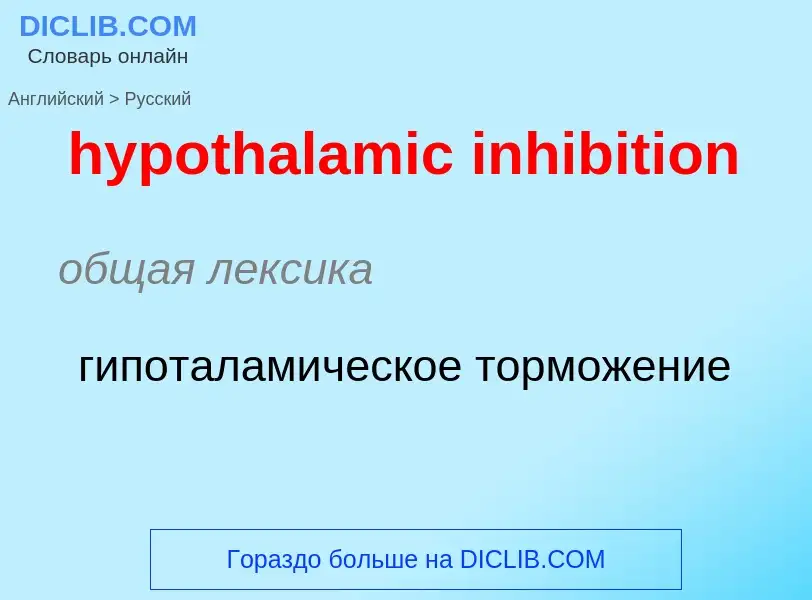Tradução e análise de palavras por inteligência artificial ChatGPT
Nesta página você pode obter uma análise detalhada de uma palavra ou frase, produzida usando a melhor tecnologia de inteligência artificial até o momento:
- como a palavra é usada
- frequência de uso
- é usado com mais frequência na fala oral ou escrita
- opções de tradução de palavras
- exemplos de uso (várias frases com tradução)
- etimologia
hypothalamic inhibition - tradução para russo
общая лексика
гипоталамическое торможение
медицина
гипоталамическое ожирение
диэнцефальное ожирение
церебральное ожирение
[in'hibit]
общая лексика
тормозить
задерживать
подавлять
угнетать
запрет, запрещение
задержать
задержка
запрещать
запрещающий
запрещение
ингибитировать
мешать
пассивировать
подавить
спассивировать
медицина
ингибировать
приостановить
Смотрите также
глагол
общая лексика
препятствовать, сдерживать, подавлять
книжное выражение
запрещать
налагать запрет
лишать права отправления церковной службы
мешать
препятствовать
сдерживать
останавливать
подавлять
химия
ингибировать
вычислительная техника
блокировать
физиология
задерживать, тормозить
синоним
Definição
Wikipédia
The lateral hypothalamus (LH), also called the lateral hypothalamic area (LHA), contains the primary orexinergic nucleus within the hypothalamus that widely projects throughout the nervous system; this system of neurons mediates an array of cognitive and physical processes, such as promoting feeding behavior and arousal, reducing pain perception, and regulating body temperature, digestive functions, and blood pressure, among many others. Clinically significant disorders that involve dysfunctions of the orexinergic projection system include narcolepsy, motility disorders or functional gastrointestinal disorders involving visceral hypersensitivity (e.g., irritable bowel syndrome), and eating disorders.
The neurotransmitter glutamate and the endocannabinoids (e.g., anandamide) and the orexin neuropeptides orexin-A and orexin-B are the primary signaling neurochemicals in orexin neurons; pathway-specific neurochemicals include GABA, melanin-concentrating hormone, nociceptin, glucose, the dynorphin peptides, and the appetite-regulating peptide hormones leptin and ghrelin, among others. Notably, cannabinoid receptor 1 (CB1) is colocalized on orexinergic projection neurons in the lateral hypothalamus and many output structures, where the CB1 and orexin receptor 1 (OX1) receptors form the CB1–OX1 receptor heterodimer.

